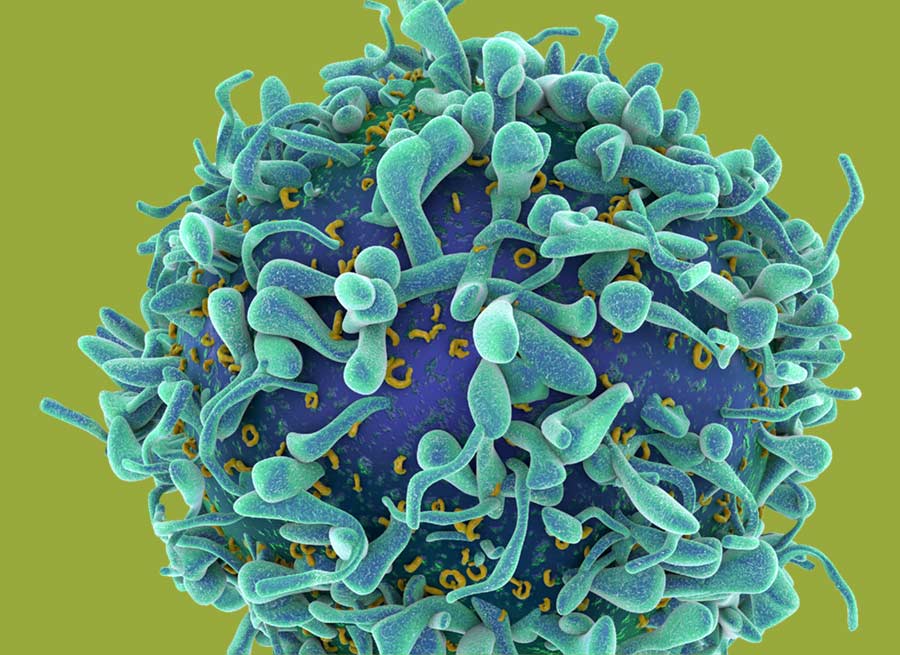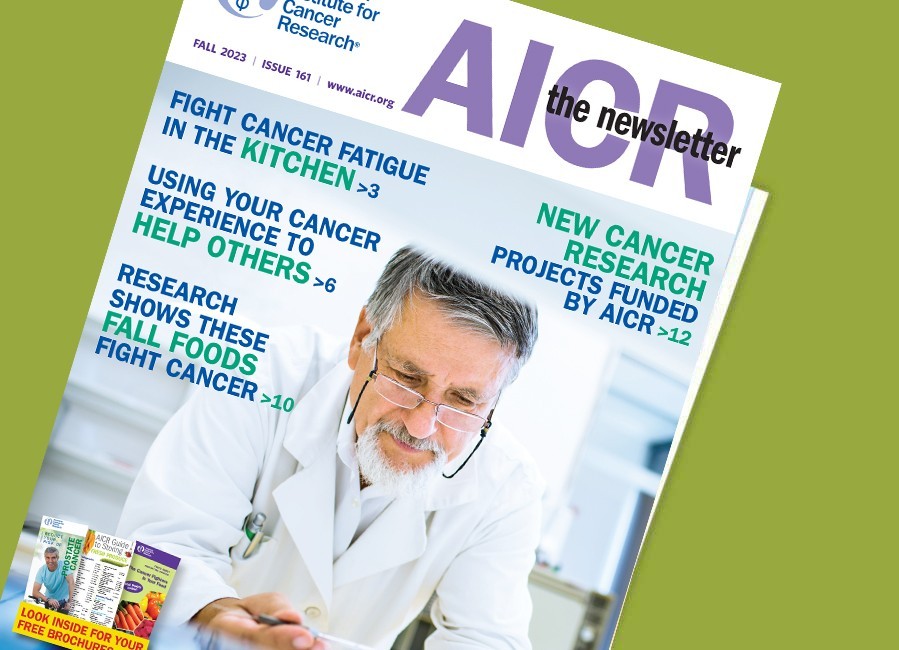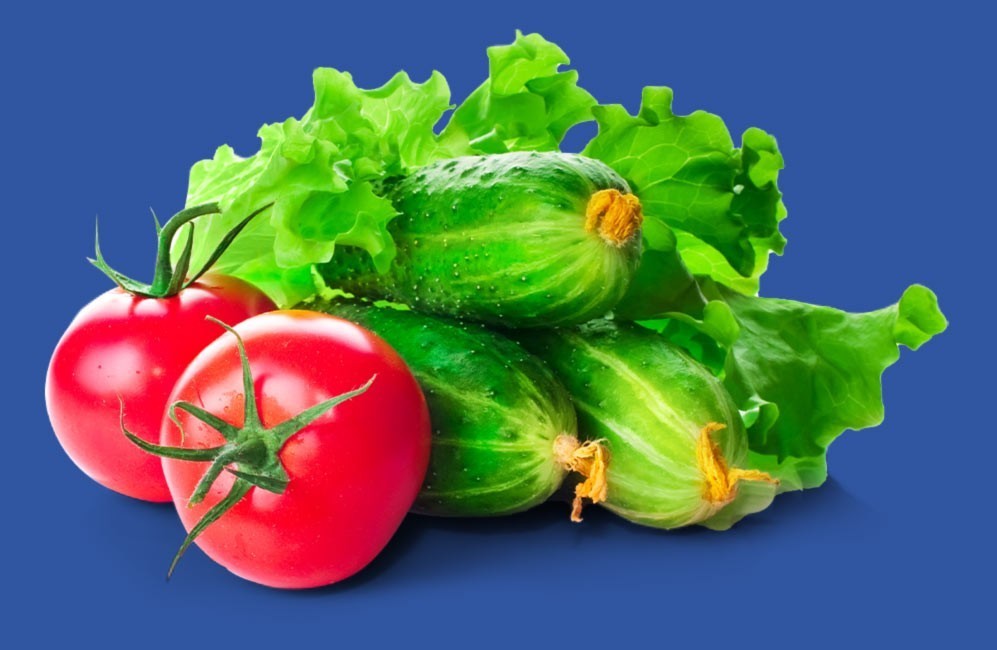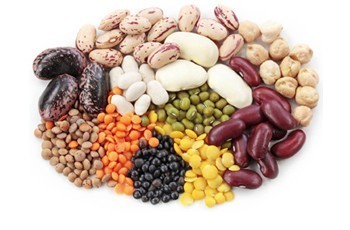The Cancer Research
Dietary fiber, resistant starch, and phenolic compounds in pulses all may support the growth of health-promoting gut bacteria (the microbiome). More research is needed to understand how individual differences, and different forms of these compounds, contribute to protection against cancer.
Interpreting the data
After a systematic review of the global scientific literature, AICR/WCRF analyzed how foods and their nutrients affect the risk of developing cancer.
“Convincing” or “probable” evidence means there is strong research showing a causal relationship to cancer—either decreasing or increasing the risk. The research must include quality human studies that meet specific criteria and biological explanations for the findings.
A convincing or probable judgement is strong enough to justify recommendations.
- There is probable evidence that foods with dietary fiber DECREASE the risk of:
- Colorectal cancer
- Weight gain, overweight and obesity*
*This is important, because there is strong evidence that excess body fat increases the risk of at least 12 different cancers.
Ongoing Areas of Investigation
- Laboratory Research
Laboratory studies have found many ways in which pulses and their many healthful compounds could provide anti-cancer activity.
Resistant starch and fermentable types of dietary fiber support growth of healthful bacteria in the colon in animal studies.
Phenolic acids increase cells’ antioxidant and anti-inflammatory defenses against damage that could lead to cancer in cell and animal studies. Emerging evidence in animal studies suggests they may also improve glucose metabolism and decrease insulin resistance, and alter the gut microbiota (microbes living in the colon), creating an environment in the body less likely to support cancer.
Flavan-3-ols influence gene expression and cell signaling in ways that increase antioxidant, anti-inflammatory and carcinogen-deactivating enzymes in cell and animal studies. They inhibit cancer cells’ growth, suppress the ability to spread, and activate signaling that leads to self-destruction of abnormal cells. These compounds dial down the expression of oncogenes (genes that have the potential to cause increased cell growth that can lead to cancer) and increase the expression of tumor suppressor genes.
Proanthocyanidins are complex compounds that are mostly unabsorbed. Microbes in the gut break them down to form phenolic acids and other phytochemicals. In cell studies, proanthocyanidins are antioxidants that seem to influence gene expression to decrease growth of cancer cells and increase their self-destruction. However, this may not reflect effects when they are consumed in food, especially outside of the gut.
Folate helps maintain healthy DNA and keep cancer-promoting genes “turned off”. Animal studies, however, suggest that exceptionally high amounts – such as amounts found in supplements – or intervention after cancer cells have formed might promote development of cancer.
Phytic acid may reduce damage to colon cells from free radicals. The effects of whole grains as a source of this protection are not yet known.
Anthocyanins influence cell signaling in ways that increase antioxidant, anti-inflammatory and carcinogen-deactivating enzymes in cell and animal studies. They inhibit cancer cells’ growth and ability to spread and activate signaling that leads to the self-destruction of abnormal cells.
Lignans increase antioxidant, anti-inflammatory and carcinogen-deactivating enzymes in cell studies. They also decrease growth and increase the self-destruction of cancer cells. In studies with mice, lignans decrease cancer development and growth.
Protease inhibitors block certain enzymes. In cell studies, they inhibit the development and growth of cancer cells at several stages and increase their self-destruction. Protease inhibitors resist digestion and reach the colon, and in animal studies, they suppress inflammation and development of colorectal cancer. Research is actively looking at their cancer-fighting potential, but their effects as consumed in foods like legumes are not known.
Saponins regulate certain enzymes that seem to inhibit oxidative stress, inflammation, and growth of cancer cells, and promote their self-destruction (apoptosis), based on cell studies. Saponins seem to be poorly absorbed out of the digestive tract, however, and more research is needed about their effects when consumed.
In cell studies, by regulating certain enzymes, saponins seem to inhibit oxidative stress, inflammation, and growth of cancer cells and promote their self-destruction (apoptosis).
- Human Studies
Human studies on dry beans, peas and lentils and cancer risk are limited and provide inconsistent findings. Studies in U.S. populations are challenging; few people eat pulses frequently, and this makes it difficult to compare groups that eat high and low amounts. Pulses’ role in reducing colorectal cancer risk could come from dietary fiber and other components of pulses themselves or could come from their part in eating patterns that limit foods that increase risk, such as red and processed meats.
Some studies link greater consumption of legumes with lower risk of colorectal cancer, but overall results are inconsistent. The AICR Third Expert Report report categorized evidence on legumes and colorectal cancer as “Limited – No conclusion.” An analysis for the AICR/WCRF Continuous Update Project combining four observational cohort studies found no association. Some researchers suggest that pulses may have greatest influence in early stages of colorectal cancer development. Compared to people who ate few legumes, those who ate the most legumes had fewer benign polyps (the beginning of most colon cancer) in an analysis combining multiple observational studies.
Some data link regular legume consumption with a possible reduced risk of prostate and breast cancers, but more research is needed, and the AICR Third Expert Report categorizes evidence for both cancers as “Limited – No conclusion.”
Dietary Fiber: Beyond the strong link AICR/WCRF found between dietary fiber and lower risk of colorectal cancer, other research related to dietary fiber is not as clear. Observational population studies link high dietary fiber consumption with reduced risk of colorectal cancer. Analyses combining 16 to 20 prospective cohort studies also link dietary fiber with a lower risk of breast cancer. However, analysis for the AICR/WCRF Third Expert Report considered the potential for an association of dietary fiber and this and several other cancers and found the evidence too limited to support a conclusion.
- The fermentable fibers in pulses can also be converted into butyrate and other short-chain fatty acids by our gut bacteria. These short-chain fatty acids reduce markers of inflammation and oxidative stress in human clinical trials and show effects on gene expression that could reduce cancer development. Resistant starch is a type of fiber that our digestive system can’t completely digest. It passes to the colon where gut bacteria use it like fermentable fiber to form short-chain fatty acids, which could have health benefits. More research is needed since limited human trials suggest that not all forms of resistant starch are the same.
- Resistant Starch is also difficult for your digestive system to completely digest. It passes to the colon where gut bacteria use it like fermentable fiber and form short-chain fatty acids. More research is needed, since limited human trials show that not all forms of resistant starch are the same.
- AICR Supported Studies
Featured Studies
- Tips for Selection, Storage and Preparation
Selection:
- Choose either uncooked or canned beans; nutritional quality is equivalent.
- Uncooked dried beans are most economical, yet canned beans offer ready-to-eat convenience.
- To reduce sodium, drain canned beans in a strainer and rinse well, or better yet, choose beans canned with no added salt.
Storage:
- Uncooked dry beans can be stored for a year or longer in the unopened plastic bag in which they are sold.
- Once opened, store in an airtight container in a cool, dry place (not the refrigerator).
Preparation Ideas:
- Before preparing beans and lentils in dried form, inspect and remove any debris or dirt.
- Dry beans and whole peas need to soak before cooking. Soak in a big pot of cold water overnight, or in hot water for one to four hours.
- To reduce gas-producing substances, soak longer, then discard the soaking water and use fresh water for cooking.
- Cook dry beans more quickly with a pressure cooker – they’re ready in 15 minutes once the presoaking is complete.
- Use beans in stews, soups, casseroles, combined with whole grains, in salads and pureed for dips.
- Lentils and split peas are the “fast foods” in the pulses family; they need only about 30-40 minutes to cook, no pre-soaking required.
- One cup of dry beans and peas equals about 2-1/2 to 3 cups cooked. When drained, one 15-ounce can equals about 1-1/2 cups of beans.
From the Blog
References
- Slavin J. Fiber and prebiotics: mechanisms and health benefits. Nutrients. 2013;5(4):1417-1435.
- Lockyer S, Nugent AP. Health effects of resistant starch. Nutrition Bulletin. 2017;42(1):10-41.
- Del Rio D, Rodriguez-Mateos A, Spencer JP, Tognolini M, Borges G, Crozier A. Dietary (poly)phenolics in human health: structures, bioavailability, and evidence of protective effects against chronic diseases. Antioxid Redox Signal. 2013;18(14):1818-1892.
- Tajik N, Tajik M, Mack I, Enck P. The potential effects of chlorogenic acid, the main phenolic components in coffee, on health: a comprehensive review of the literature. Eur J Nutr. 2017;56(7):2215-2244.
- Villa-Rodriguez JA, Ifie I, Gonzalez-Aguilar GA, Roopchand DE. The Gastrointestinal Tract as Prime Site for Cardiometabolic Protection by Dietary Polyphenols. Advances in Nutrition. 2019;10(6):999-1011.
- Li W, Guo Y, Zhang C, et al. Dietary Phytochemicals and Cancer Chemoprevention: A Perspective on Oxidative Stress, Inflammation, and Epigenetics. Chem Res Toxicol. 2016;29(12):2071-2095.
- Yang CS, Chen JX, Wang H, Lim J. Lessons Learned from Cancer Prevention Studies with Nutrients and Non-Nutritive Dietary Constituents. Mol Nutr Food Res. 2016;60(6):1239-1250.
- Yang CS, Wang X. Green tea and cancer prevention. Nutr Cancer. 2010;62(7):931-937.
- Yang CS, Wang X, Lu G, Picinich SC. Cancer prevention by tea: animal studies, molecular mechanisms and human relevance. Nat Rev Cancer. 2009;9(6):429-439.
- Montgomery M, Srinivasan A. Epigenetic Gene Regulation by Dietary Compounds in Cancer Prevention. Advances in Nutrition. 2019;10(6):1012-1028.
- Lachance JC, Radhakrishnan S, Madiwale G, Guerrier S, Vanamala JKP. Targeting hallmarks of cancer with a food-system–based approach. Nutrition. 2020;69:110563.
- de Melo FHM, Oliveira JS, Sartorelli VOB, Montor WR. Cancer Chemoprevention: Classic and Epigenetic Mechanisms Inhibiting Tumorigenesis. What Have We Learned So Far? Frontiers in oncology. 2018;8:644-644.
- Casey SC, Amedei A, Aquilano K, et al. Cancer prevention and therapy through the modulation of the tumor microenvironment. Semin Cancer Biol. 2015;35:S199-S223.
- Smeriglio A, Barreca D, Bellocco E, Trombetta D. Proanthocyanidins and hydrolysable tannins: occurrence, dietary intake and pharmacological effects. Br J Pharmacol. 2017;174(11):1244-1262.
- Pieroth R, Paver S, Day S, Lammersfeld C. Folate and Its Impact on Cancer Risk. Current Nutrition Reports. 2018;7(3):70-84.
- Rebello CJ, Greenway FL, Finley JW. Whole grains and pulses: a comparison of the nutritional and health benefits. J Agric Food Chem. 2014;62(29):7029-7049.
- Duthie SJ. Berry phytochemicals, genomic stability and cancer: Evidence for chemoprotection at several stages in the carcinogenic process. Mol Nutr Food Res. 2007;51(6):665-674.
- de Sousa Moraes LF, Sun X, Peluzio MdCG, Zhu M-J. Anthocyanins/anthocyanidins and colorectal cancer: What is behind the scenes? Crit Rev Food Sci Nutr. 2019;59(1):59-71.
- De Silva SF, Alcorn J. Flaxseed Lignans as Important Dietary Polyphenols for Cancer Prevention and Treatment: Chemistry, Pharmacokinetics, and Molecular Targets. Pharmaceuticals. 2019;12(2):68.
- Mason JK, Thompson LU. Flaxseed and its lignan and oil components: can they play a role in reducing the risk of and improving the treatment of breast cancer? Appl Physiol Nutr Metab. 2014;39(6):663-678.
- Clemente A, Arques M. Bowman-Birk inhibitors from legumes as colorectal chemopreventive agents. World J Gastroenterol. 2014;20(30):10305-10315.
- Srikanth S, Chen Z. Plant Protease Inhibitors in Therapeutics-Focus on Cancer Therapy. Frontiers in Pharmacology. 2016;7(470).
- World Cancer Research Fund / American Institute for Cancer Research. Continuous Update Project Expert Report 2018. Diet, nutrition, physical activity and colorectal cancer. Available at: dietandcancerreport.org.
- Norat T, Vieira AR, Abar L, et al. The Associations Between Food, Nutrition and Physical Activity and the Risk of Colorectal Cancer. WCRF/AICR Systematic Literature Review Continuous Update Project Report. London: World Cancer Research Fund / American Institute for Cancer Research;2017.
- Wang Y, Wang Z, Fu L, Chen Y, Fang J. Legume consumption and colorectal adenoma risk: a meta-analysis of observational studies. PLoS One. 2013;8(6):e67335.
- World Cancer Research Fund / American Institute for Cancer Research. Continuous Update Project Expert Report 2018. Diet, nutrition, physical activity and breast cancer. Available at: dietandcancerreport.org.
- World Cancer Research Fund / American Institute for Cancer Research. Continuous Update Project Expert Report 2018. Diet, nutrition, physical activity and prostate cancer. Available at: dietandcancerreport.org.
- Ma Y, Hu M, Zhou L, et al. Dietary fiber intake and risks of proximal and distal colon cancers: A meta-analysis. Medicine. 2018;97(36):e11678.
- Aune D, Chan DS, Greenwood DC, et al. Dietary fiber and breast cancer risk: a systematic review and meta-analysis of prospective studies. Ann Oncol. 2012;23(6):1394-1402.
- Norat T, Chan D, Vingeliene S, et al. The Associations Between Food, Nutrition and Physical Activity and the Risk of Breast Cancer. WCRF/AICR Systematic Literature Review Continuous Update Project Report. London: World Cancer Research Fund / American Institute for Cancer Research;2017.
- Chen S, Chen Y, Ma S, et al. Dietary fibre intake and risk of breast cancer: A systematic review and meta-analysis of epidemiological studies. Oncotarget. 2016;7(49):80980-80989.
- World Cancer Research Fund / American Institute for Cancer Research. Continuous Update Project Expert Report 2018. Wholegrains, vegetables and fruit and the risk of cancer. Available at: dietandcancerreport.org.
- O’Keefe SJ. Diet, microorganisms and their metabolites, and colon cancer. Nat Rev Gastroenterol Hepatol. 2016;13(12):691-706.
- Holscher HD. Dietary fiber and prebiotics and the gastrointestinal microbiota. Gut Microbes. 2017;8(2):172-184.
- Gentile CL, Weir TL. The gut microbiota at the intersection of diet and human health. Science. 2018;362(6416):776-780.
- Bultman SJ. The microbiome and its potential as a cancer preventive intervention. Semin Oncol. 2016;43(1):97-106.
- Aune D. Plant Foods, Antioxidant Biomarkers, and the Risk of Cardiovascular Disease, Cancer, and Mortality: A Review of the Evidence. Advances in Nutrition. 2019;10(Supplement_4):S404-S421.






